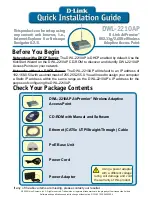
Troubleshooting
103
Orbi High-Performance
AC3000
Tri-band
WiFi
System
WiFi Connectivity
If you are experiencing trouble connecting to the Orbi WiFi network, try to isolate the
problem:
•
Does the WiFi-enabled computer or mobile device that you are using find your WiFi
network?
If you disabled the router’s SSID broadcast, then your WiFi network is hidden and does
not display in the list of networks that your computer or WiFi device finds. (By default,
SSID broadcast is enabled.)
•
Does your WiFi-capable device support the security that you are using for your WiFi
network (WPA or WPA2)?
•
To view the WiFi settings for the router, use an Ethernet cable to connect a computer to a
LAN port on the router. Then log in to the router, and select
BASIC > Wireless
.
Note:
Be sure to click the
Apply
button if you change settings.
•
If you are trying to connect to the 5 GHz 1 or 5 GHz 2 band, does your WiFi-enabled
computer or mobile device support this standard?
•
Did your computer or WiFi device automatically connect to a different WiFi network in
your area, such as a WiFi hotspot?
Troubleshoot Your Network Using the Ping Utility
Most network devices and routers contain a ping utility that sends an echo request packet to
the designated device. The device then responds with an echo reply. You can easily
troubleshoot a network using the ping utility in your computer or workstation.
Test the LAN Path to Your Router
You can ping the router from your computer to verify that the LAN path to your router is set up
correctly.
To ping the router from a Windows computer:
1.
From the Windows toolbar, click the
Start
button and select
Run
.
2.
In the field provided, type
ping
followed by the IP address of the router, as in this example:
ping www.routerlogin.net
3.
Click the
OK
button.
You should see a message like this one:
Pinging <IP address > with 32 bytes of data
If the path is working, you see this message:
Reply from < IP address >: bytes=32 time=NN ms TTL=xxx







































